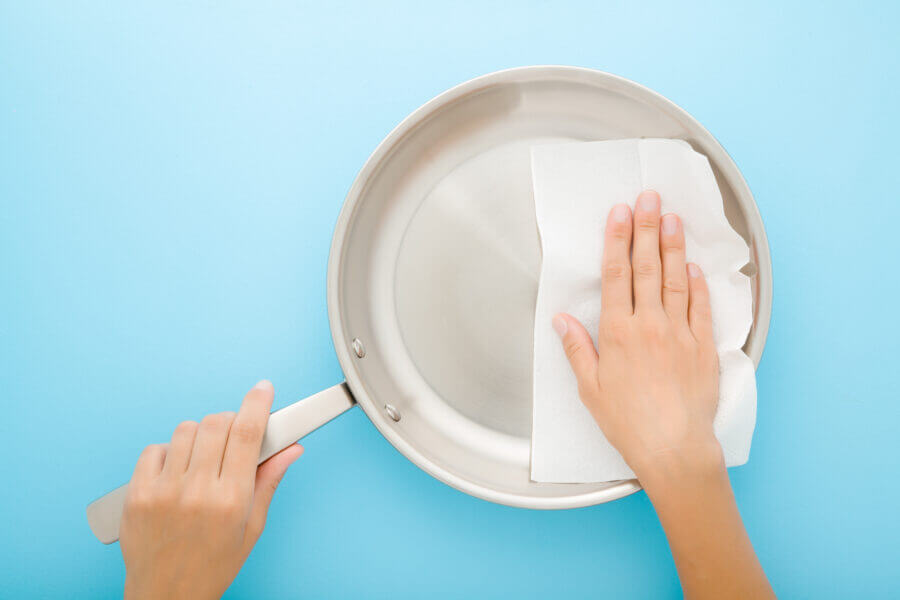So, your brand new pan is dirty. But you don’t want to scratch it up with excessive scrubbing. How can you clean stainless steel pans without accidental damage?
Understanding Stainless Steel Material
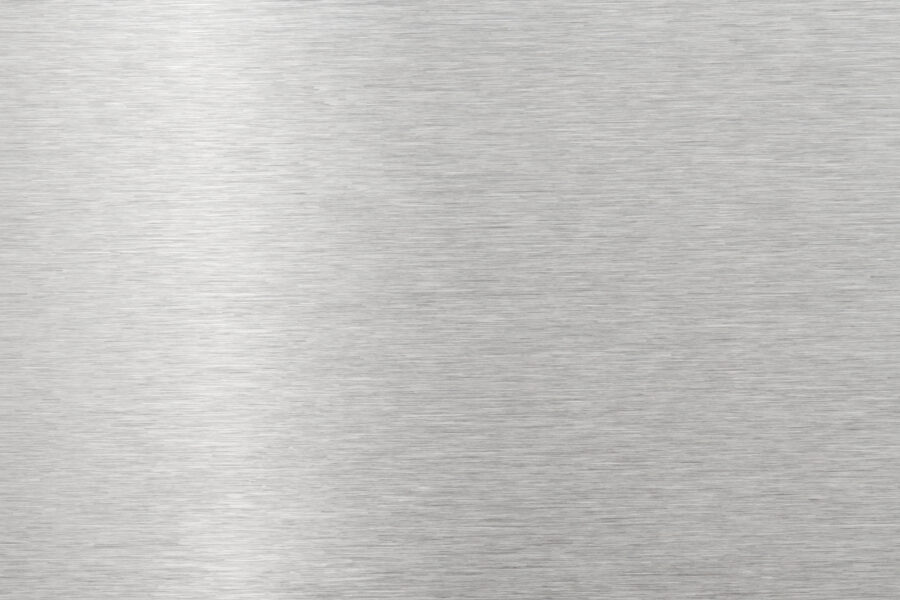
Stainless steel was manufactured specifically for its durability and ease of use. When it comes to cookware, you’ll want it to be stainless steel.
The material has a long, detailed history. However, we know that the modern version of it was first invented sometime in the early 20th century.
Stainless steel is unique from other steels and metals because of its resistance to rust (among other things). It can rust, but it takes a lot.
Stainless Steel Grades
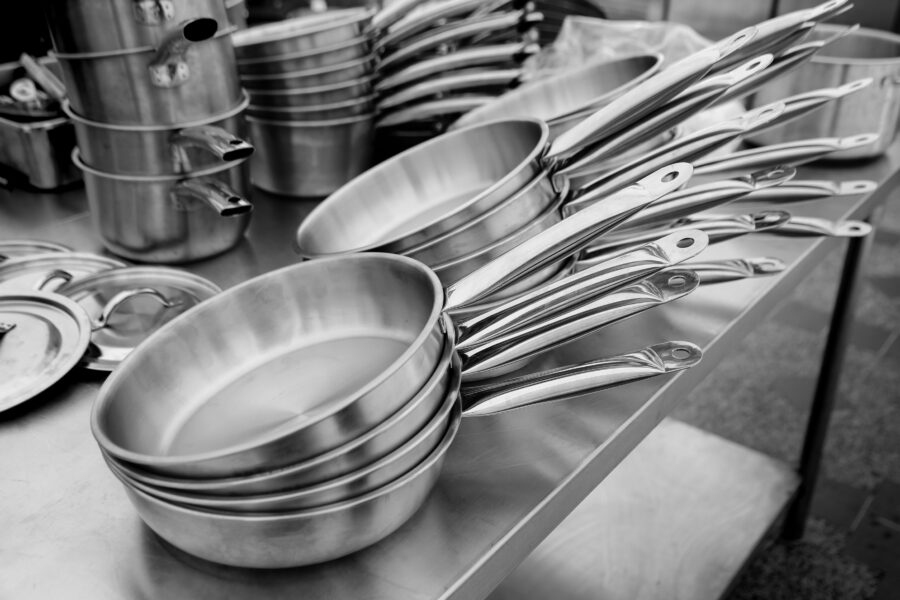
Stainless steel is typically classified into different “grades,” or types. There are upwards of 150 different grades, though that’s irrelevant to your pots and pans.
Out of the 150-plus grades, only 15 of those are actually used. Even less are used for cookware. However, some grades are better for cookware than others.
The 200, 300, and 400 series’ are all suitable for cookware. It should be specified by the manufacturer. 316 and 430 are popular and high-quality.
Common Cleaning Mistakes
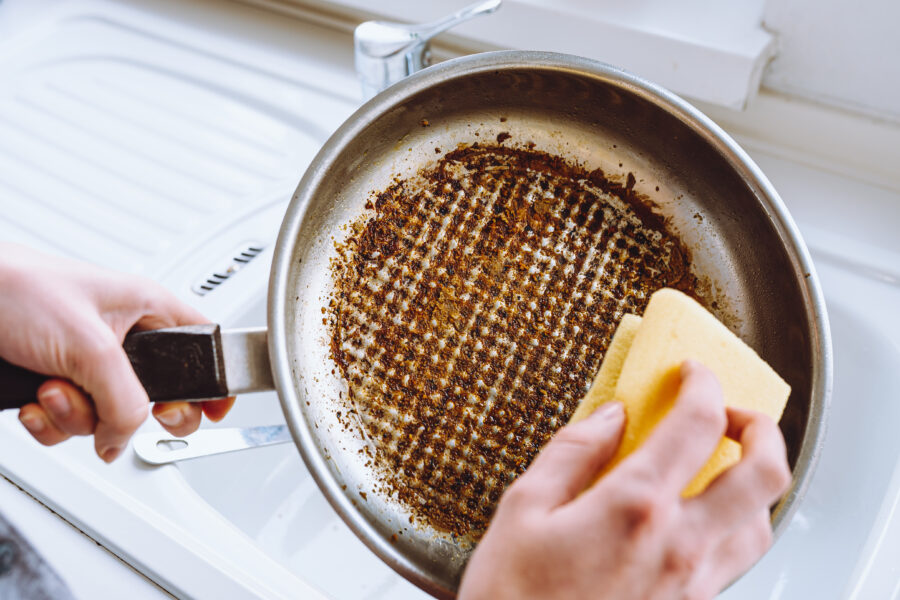
Now that we’ve gone over what the material is, how can you clean stainless steel pans? Well, we need to understand the most common cleaning mistakes.
First off, don’t use anything abrasive. It may seem like the right move, especially if you’ve got stubborn stains, but they’ll only damage your cookware.
A more common (and easy) mistake to make is not wiping along the grain. Not doing so can lead to buildup of grime over time.
Tools and Materials Needed
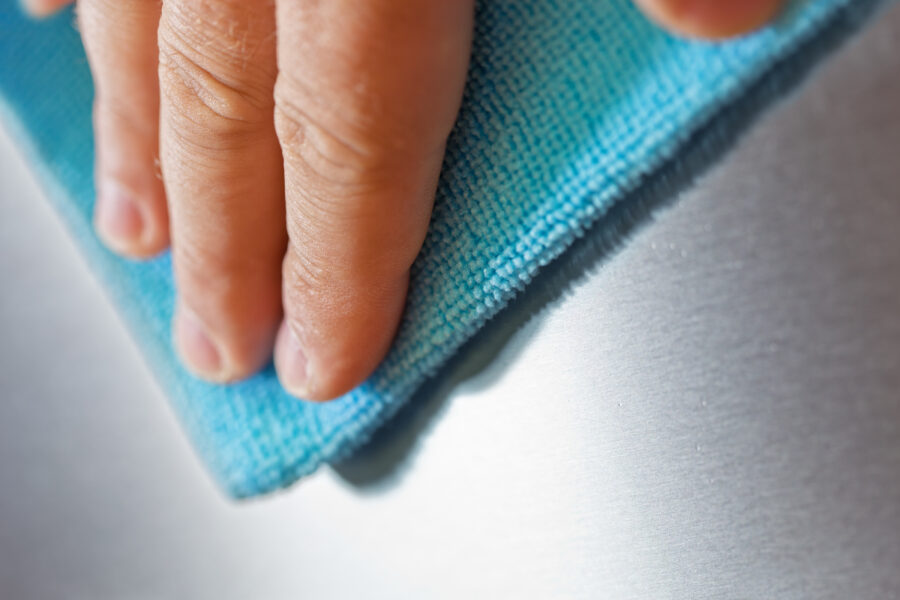
You’ll need your hand, obviously. Preferably your arm, too. In all seriousness, though, a microfiber towel or sponge will do nicely, since they’re not abrasive (like steel wool).
Of course, soap and water is the way to go (and the simplest) However, there’s also various products that claim to clean stainless steel the best.
We won’t make a judgment, but we’ll name a few for you to browse. Bar Keeper’s Friend, Hestan, and Weiman are all brands that offer such products.
Specialty Stainless Steel Cleaners
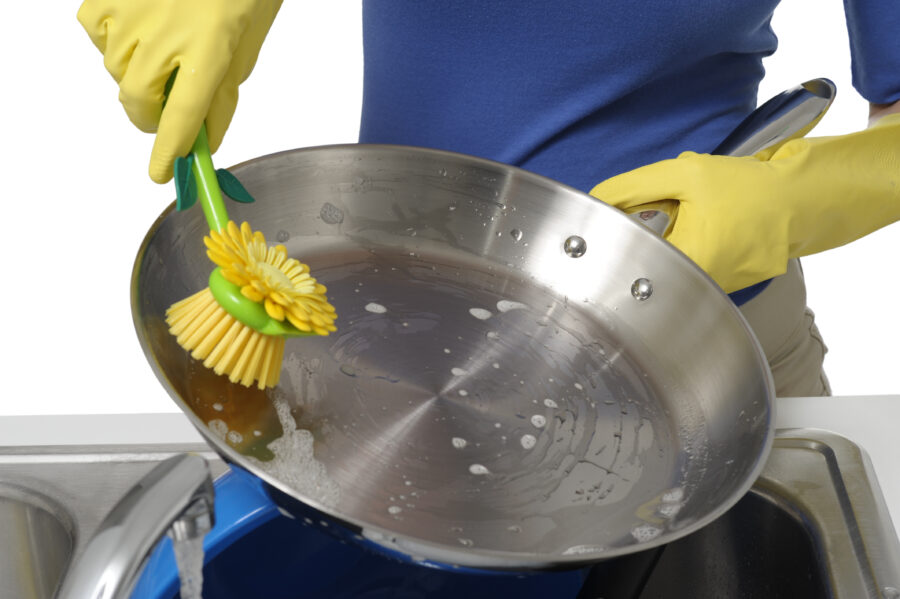
While soap and water works, there are specialty cleaners meant specifically for stainless steel. Washing your pan like any other dish may leave it more prone to smudging.
Using a specialty cleaner will keep your stainless steel in tip-top shape. Even if you don’t use it regularly, you should still do so now and again.
When looking for a specialty cleaner, make sure that the one you try doesn’t leave any smudges. Be sure to wipe gently, along the grain, as well.
Is Stainless Steel Dishwasher Safe?
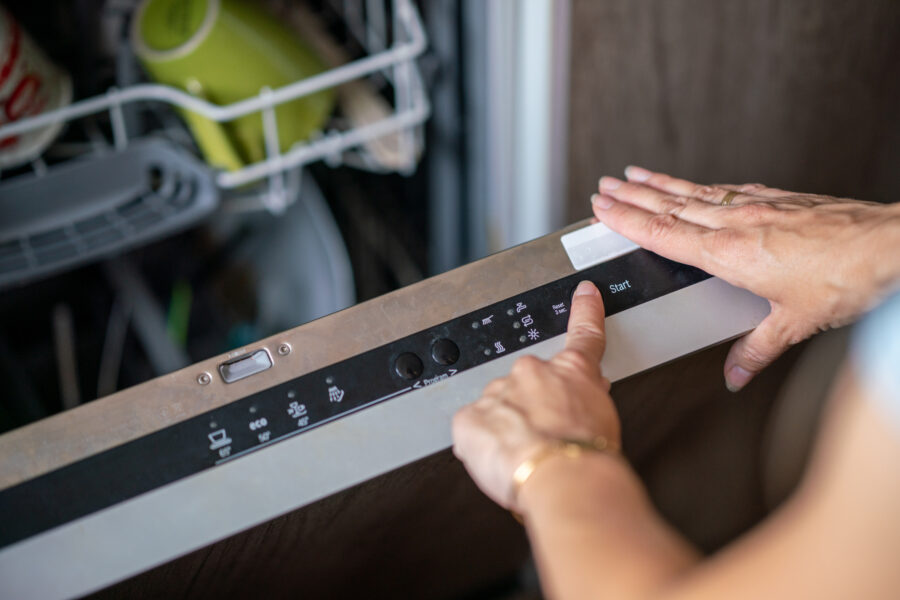
Short answer: yes. Well, usually. You might want to hand wash them if you’re feeling nervous about it, but stainless steel is generally safe for the dishwasher.
According to USA Today, stainless steel is mostly dishwasher-safe, though you should put them in the top rack. They also shouldn’t be tightly packed in there.
So, whether or not you clean your stainless steel pots and pans in the dishwasher is up to you. Nothing terrible will happen if you do.
DIY Cleaning Solutions
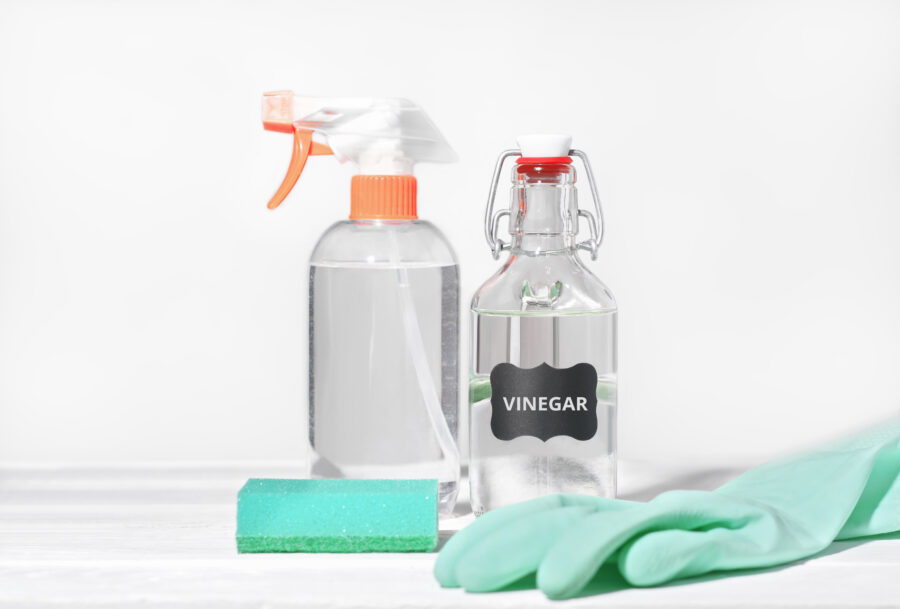
Don’t want to spend money on specialty cleaners? Or are you wary of the chemicals? Either way, DIY cleaners are a great method for cleaning stainless steel pans.
One of the best home cleaners is probably already in your pantry. That’s right: vinegar. You may have used it to clean your oven rack.
That’s because vinegar is an incredibly versatile cleaner, and works on just about anything. White vinegar, in particular, is great for cleaning grease without smudging.
Natural Cleaners
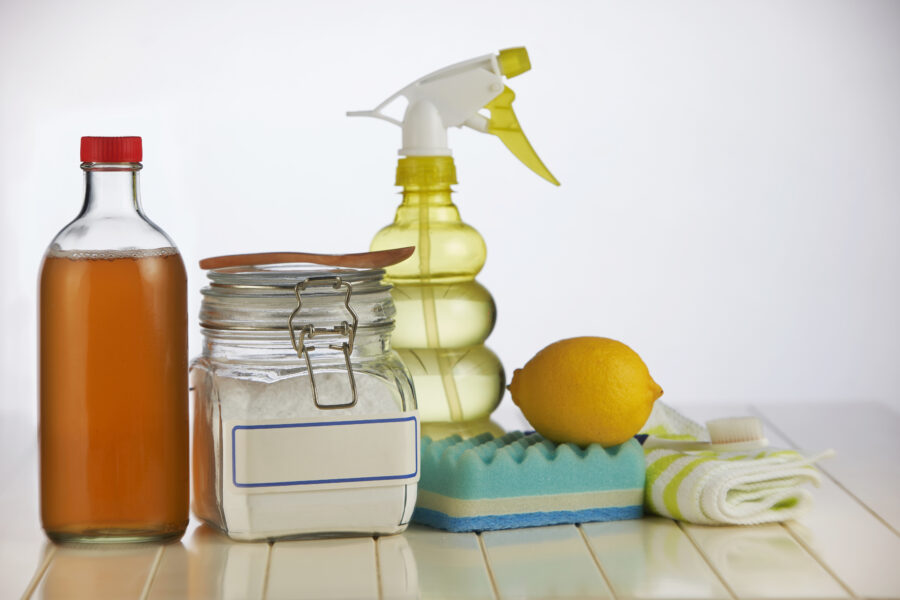
There’s plenty of natural cleaning methods you can use. A combo of white vinegar and olive oil will polish your pan in no time.
If your stainless steel pan is prone to streaking, we’ve got the solution. Lemon juice and water is another great, all-natural cleaner, perfect for that purpose.
There are some brands that offer natural cleaners, too, which you’re welcome to try. However, nothing is more natural than what you’ve already got in your kitchen.
Steam Cleaning
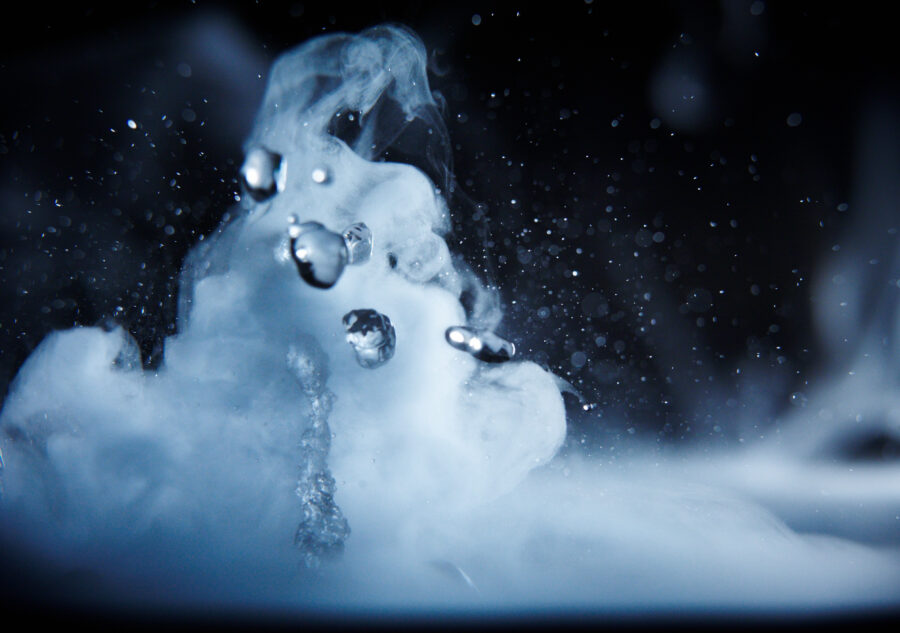
Steam cleaning is another easy and natural way to clean your stainless steel pans. It might honestly work better than any steel specialty cleaner.
All you need is a handheld steamer (and some water, obviously). Once you’ve covered the pan in steam, wipe off the condensation with a microfiber cloth.
This is a gentle and effective cleaning method that’ll perfectly polish your pan. It may not work on tough, burnt-on stains and grime, however.
Avoiding Scratches During Cleaning

If you use the correct cleaning methods, avoiding scratches becomes pretty easy. However, it can be tempting to use abrasive materials to clean tough stains.
Even if steel wool seems like a good idea at first, don’t use it. That’s really the only rule when it comes to avoiding scratches.
Remember, though: steel wool isn’t the only abrasive material out there. Paper towels can also leave small scratches on stainless steel. Stick with microfiber cloths and sponges.
Dealing with Burnt-On Stains

I think I speak for all of us when I say that burnt-on stains are incredibly annoying. It seems futile to try and clean such a stubborn stain.
Like most stains, however, they can be removed with a good soak. Still, these aren’t your run-of-the-mill food stains. They require a little extra work.
According to The New York Times, you can boil the whole pan. Aside from water, you’ll want to use baking soda. Boil it for about twenty minutes.
Removing Burn Marks

You can use that boiling method to remove regular burn marks as well. However, there are other methods you can use that don’t involve boiling your whole pan.
Baking soda is another fantastic cleaning agent that you’ve probably got at home. You’ll always want to have some on hand, especially in situations like this.
Some natural cleaning solutions utilize salt, but you don’t want to do that here, since salt is too abrasive. Baking soda, water, and soap do nicely.
Cleaning Handles
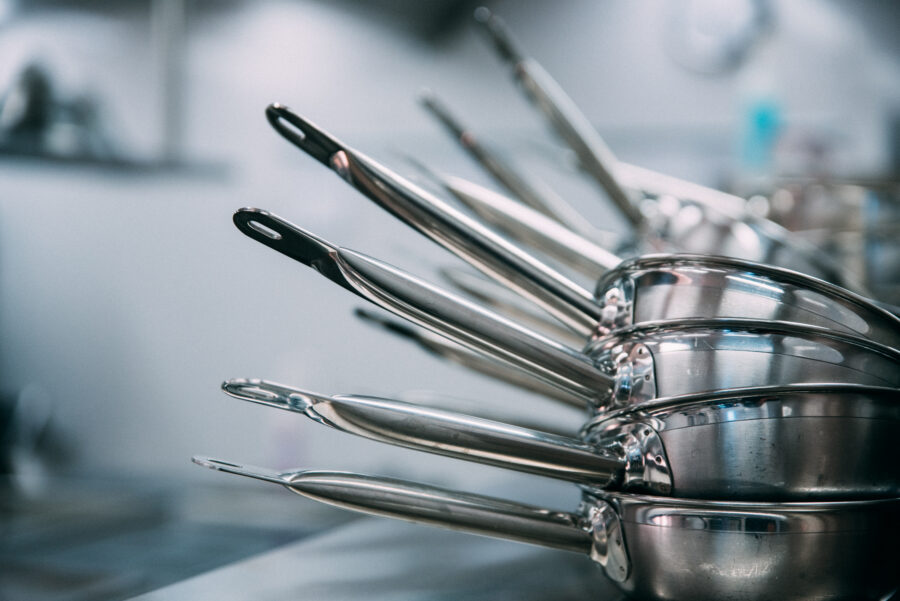
Do you need a different cleaning method for the pan’s handles? Or can you treat it like the rest of the pan? Well, that depends on the material.
Most stainless steel pans also have steel (or aluminum) handles. If that’s the case with yours, the cleaning method doesn’t really differ all that much.
However, if the handle is made of rubber, cleaning will be a little different. Soap and water works, but if the rubber is sticky, use rubbing alcohol.
Cleaning Pan Lids
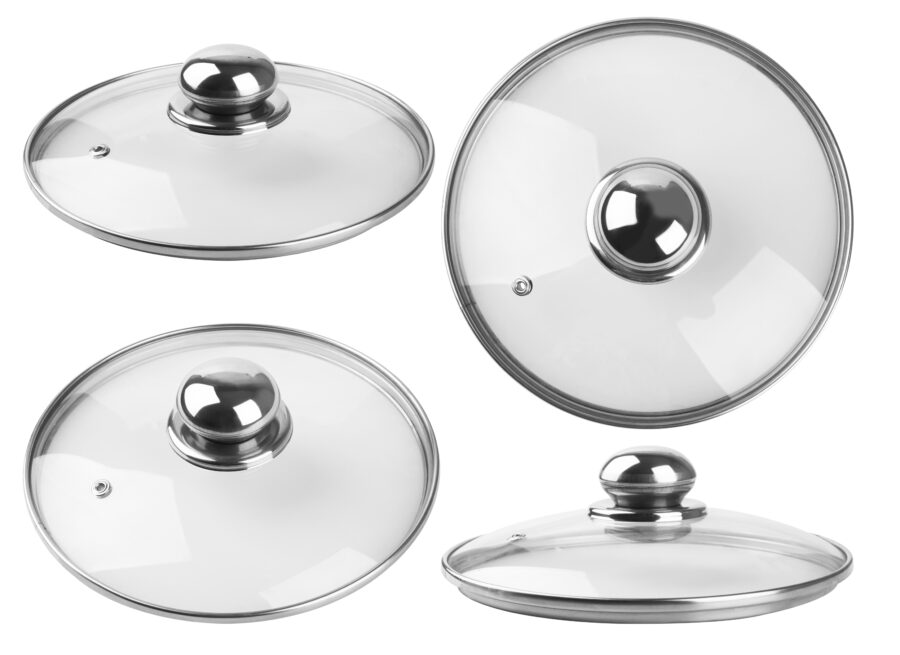
Since pan lids are usually made from glass, the cleaning methods differ from the pans’. Luckily, it also makes cleaning a lot easier.
All you need is soap, warm water, and a sponge. Basically, you’ll clean the lids like you would anything else. There’s no need for specialty cleaner.
If your lid is really dirty, use baking soda. Just remember to clean it after every use — the lid needs it just as much as the pan!
Proper Cleaning Frequency
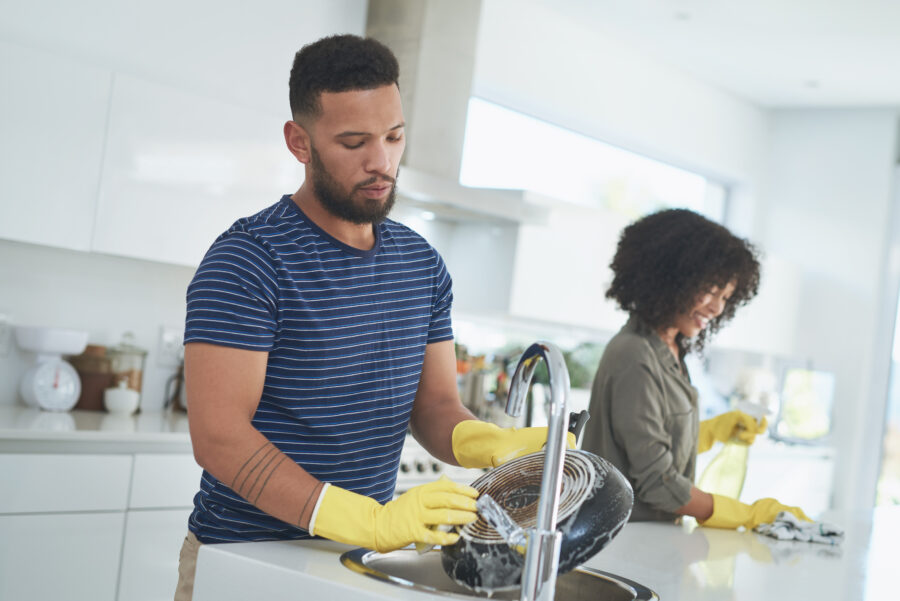
Basic rule of thumb: wash your pan (and the lid) with soap and water after every use. You don’t need to use a specialty cleaner every time, though.
Clean with vinegar as soon as you notice grease build-up. You don’t need to use a vinegar solution every time, but you shouldn’t delay, either.
If keeping your pans shiny is a high priority, then use specialty cleaners regularly. Once a month is more than enough, especially if your pans are generally clean.
Dealing with Grease Build-Up
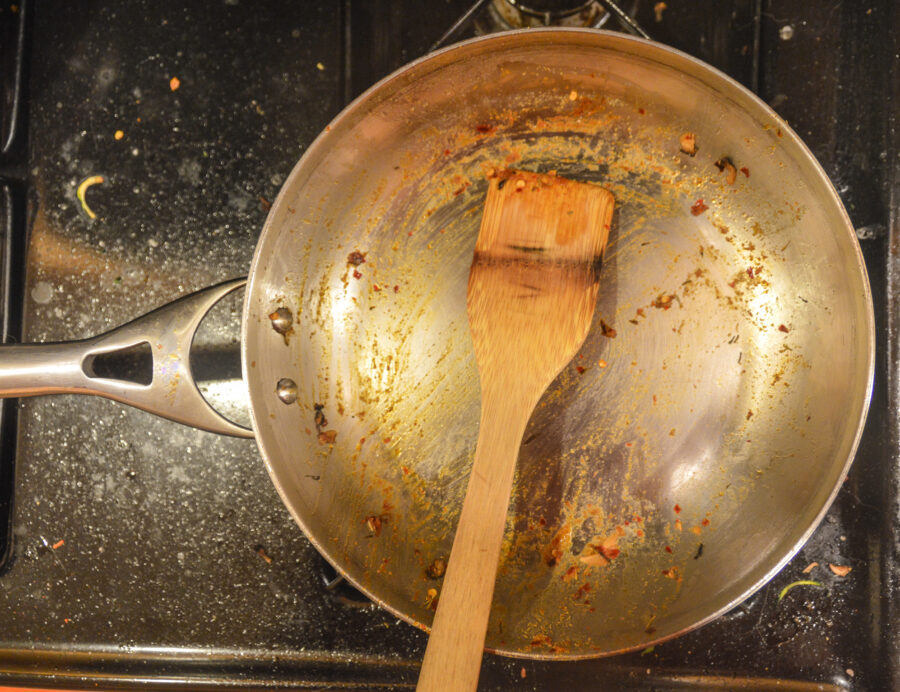
Regularly washing your pans with soap and water should prevent grease build-up. However, sometimes grease gets baked on. In that case, use baking soda.
Bar Keepers Friend is another powerful and effective cleaner for situations like this one. It’s a little more effective than baking soda, since it contains oxalic acid.
Oxalic acid is particularly good at fighting tough grease stains. It can also remove rust (luckily, though, your stainless steel pans are unlikely to).
Safe Storage
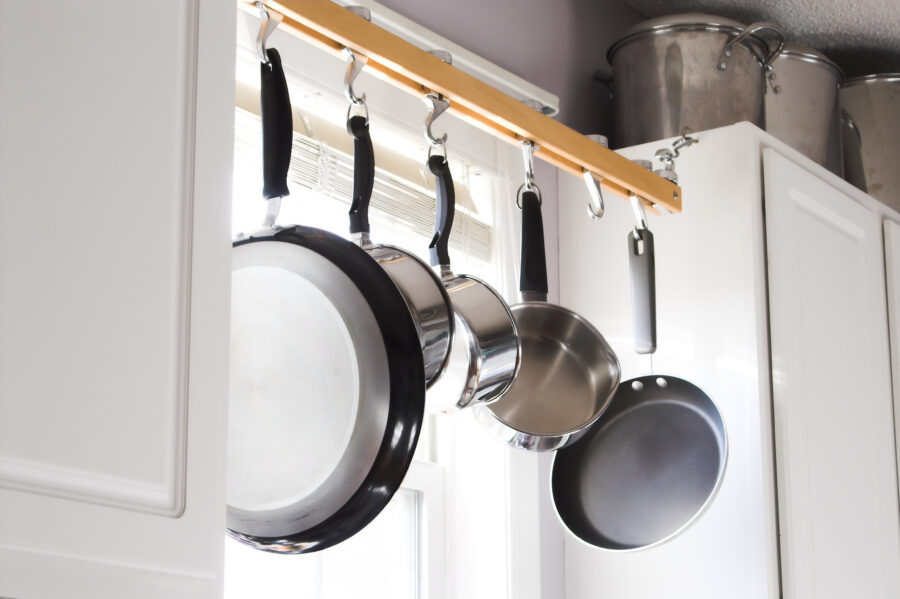
Once you’re done cleaning your stainless steel pans, how do you properly store them? Stainless steel can be prone to small scratches, so you’ll want to avoid that.
Whatever you do, don’t stack them. Stainless steel cookware, regardless of the type, doesn’t take well to being stored in close quarters. It can cause scratching and denting.
You know how people like to hang their cookware from racks? This is because doing so prevents any possible damage that comes from improper storage.
Preventing Rust and Corrosion
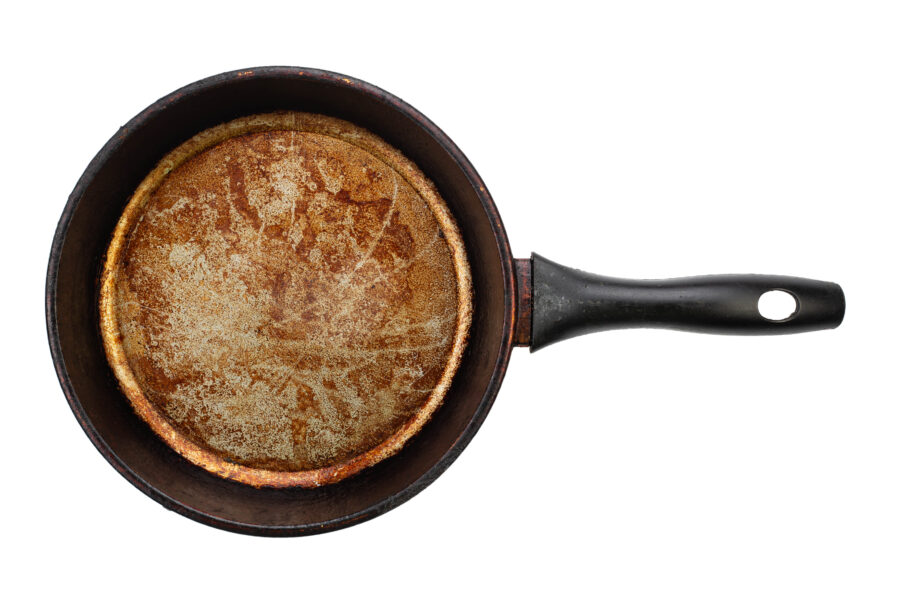
As we’ve said, it takes a lot for stainless steel to rust. That’s one of the benefits to having stainless steel cookware. However, that doesn’t mean it’s impossible.
Excessive scratching, especially from abrasive cleaning tools, can damage the protective layer of chromium oxide in stainless steel cookware. This leads to rust.
The best defense against rusting in stainless steel is proper cleaning and storage. This minimizes the chance of scratching and, as a result, rusting.
Restoring Shine
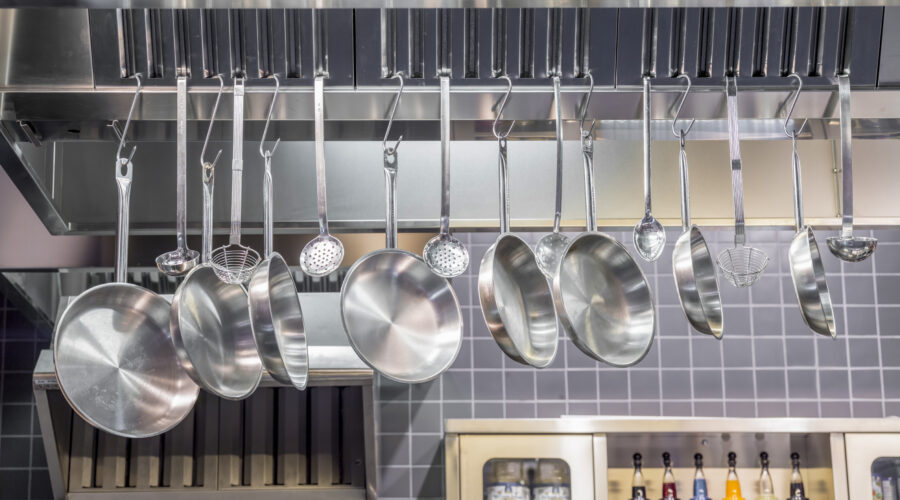
Aside from the cleaning methods we’ve described, how can you restore shine? Well, believe it or not, oil is a great way to do it.
The kind of oil you use is really up to you. Olive oil seems to be the most popular choice, though mineral oil and baby oil also work.
If you’d rather not polish your stainless steel pan with oil, don’t worry. Purchasing a stainless steel specialty cleaner will get the job done.
Polishing Techniques
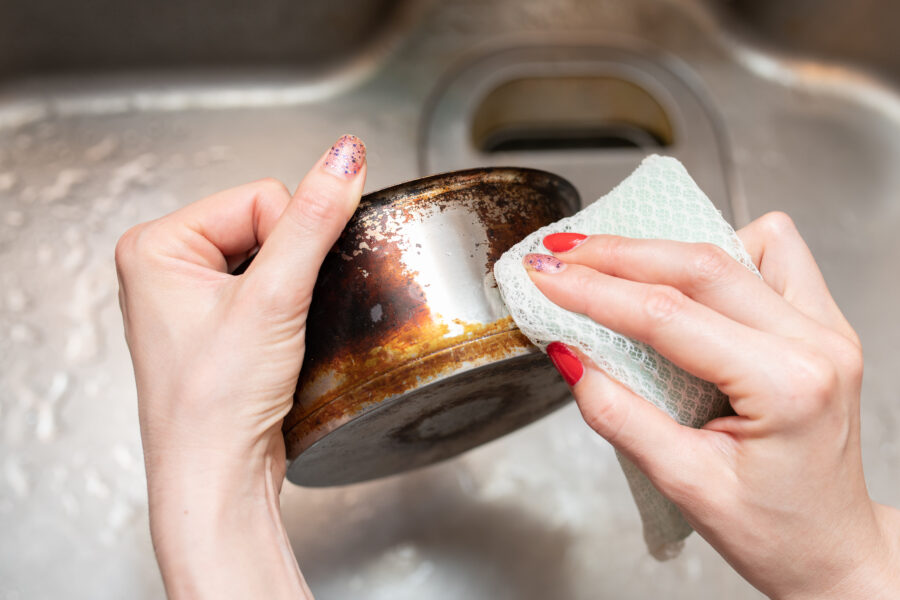
Now that you know what to polish your pans with, is there any specific way you should polish them? Well, there are a couple of different methods.
As we mentioned earlier, baking soda or Bar Keepers Friend works wonders. It’ll clean and polish your steel, making it look as good as new.
Apparently, flour is just abrasive enough to polish your steel, but not so abrasive that it’ll damage it. Rub it in with a cloth, not a paper towel.
Dealing with Discoloration
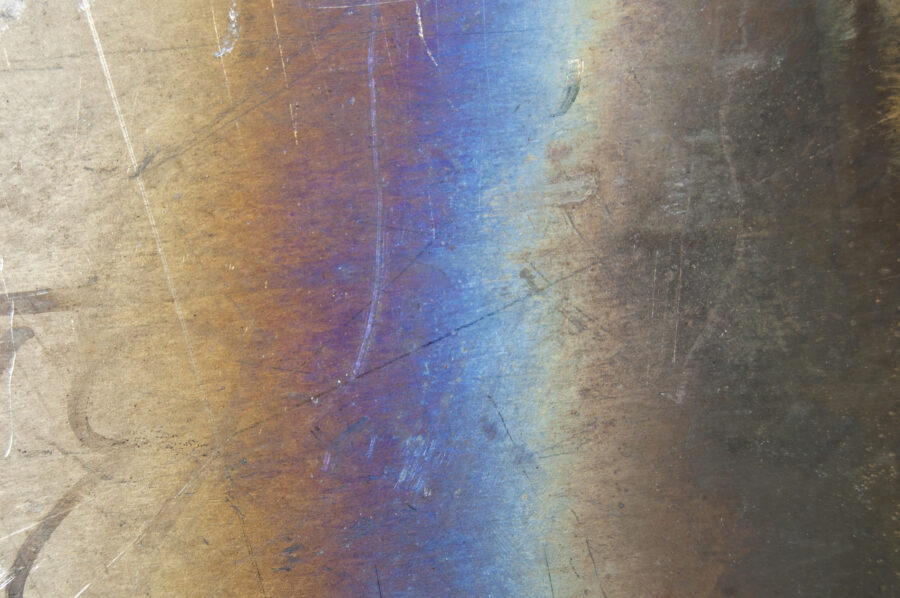
Chances are, you’ve dealt with this before. After a while, stainless steel cookware can become discolored, leading to rainbow-like stains on your pots and pans.
If your pan starts to do this, don’t freak out. Discoloration has nothing to do with rust or grime. According to Taste of Home, heat is to blame.
These stains are pretty much inevitable, but won’t affect your food. To remove, use a white vinegar solution. It’ll make your pans shiny again.
Removing Odors

So, stainless steel doesn’t usually pick up odors, which is what makes it ideal for cookware. That’s because of the chromium inside of it, which neutralizes odors.
If your stainless steel cookware smells, there’s a good chance it’s not actually steel, or that there’s an issue with it. We suggest contacting the manufacturer.
Fun fact, though: stainless steel can remove odors from your hands. They actually sell metal “soap” bars made from stainless steel for this purpose.
Maintaining Longevity
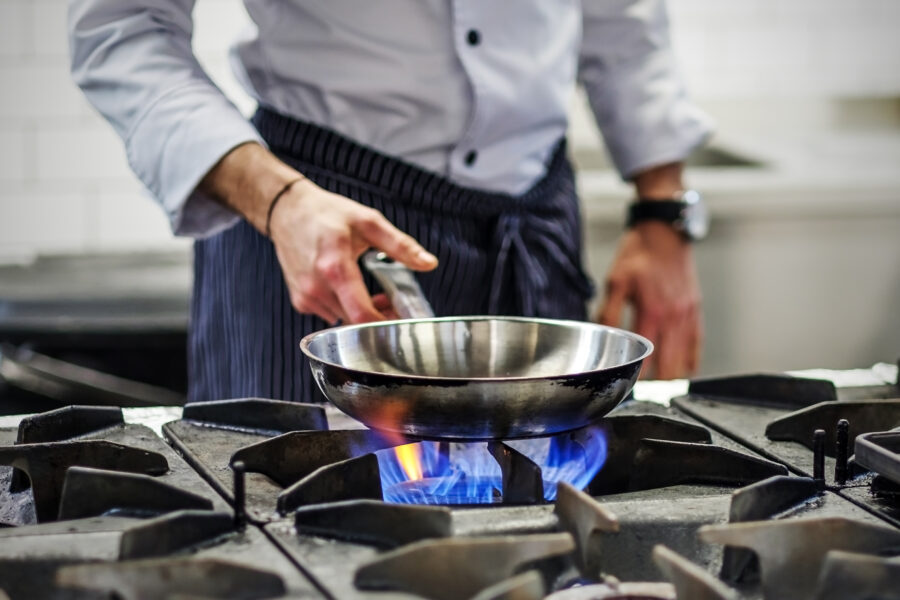
These pans are seriously built to last. If you clean stainless steel pans correctly, you can make them last for years, even decades.
There really isn’t much more to it than that. Make sure not to use harsh chemicals or abrasive tools, and polish them on a regular basis.
It’s important to practice proper storage techniques as well. You can be careful not to scratch the pans while cleaning, but if store them improperly, there’s no point.
Stainless Steel Seasoning Techniques
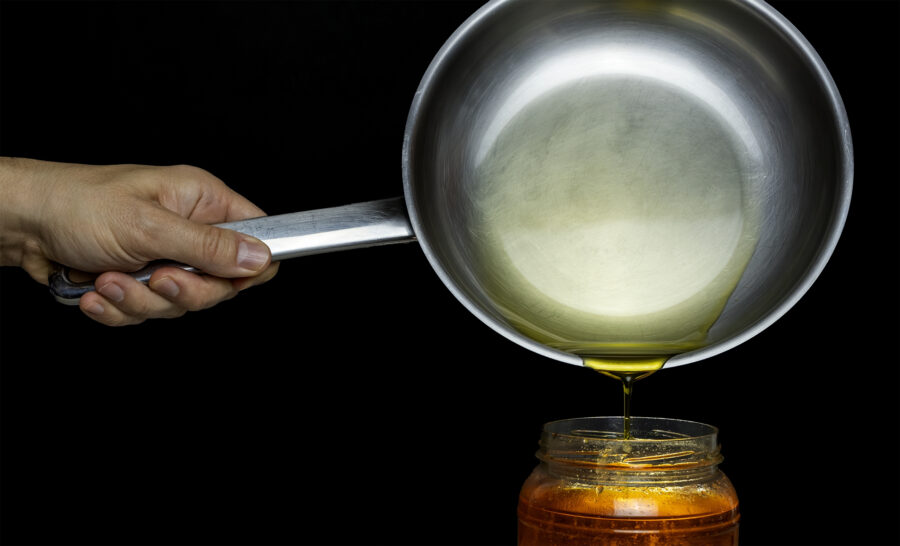
You might be scratching your head at “seasoning.” This is a practice typically reserved for cast-iron pans, and cookware that doesn’t already have a protective layer.
To season a pan is to create that layer with carbonized oil, essentially creating a nonstick surface. However, it’s unnecessary with stainless steel pans.
People still do it, though. In this case, people usually do it by heating vegetable oil on the pan and disposing of any excess.
What About the Non-Stick Properties?
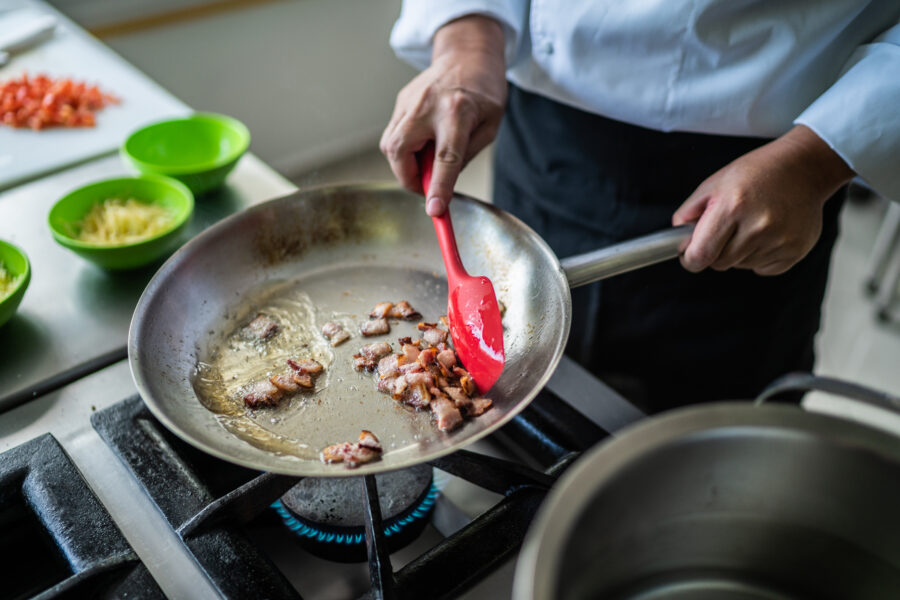
As we touched upon in the previous section, stainless steel has a protective layer. However, this is only for rust and damage, meaning that it’s not nonstick.
So, you’ll need to use oil when you’re cooking. This will prevent the food from sticking to your pan, minimizing mess down the road.
That doesn’t mean that you should ditch your stainless steel pan for a nonstick one, though. Stainless steel tends to be much more durable.
Restoring Matte Finishes
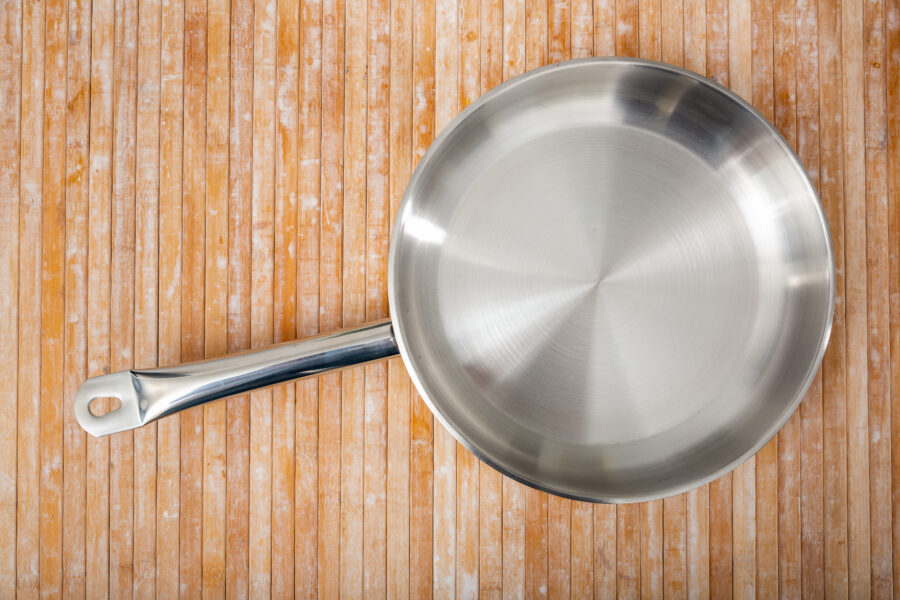
Stainless steel cookware can have a brushed, polished, or matte finish. Cookware with a brushed finish, for example, usually looks brushed, with rings on the surface.
Restoring a matte finish is no different from restoring any other. You’ll use the same polishing techniques that we mentioned above to make it shine again.
We recommend using flour as a very gentle abrasive, to clean off any dirt that’s making the surface duller. Oil will also make it shine.
Cleaning in Hard Water Areas
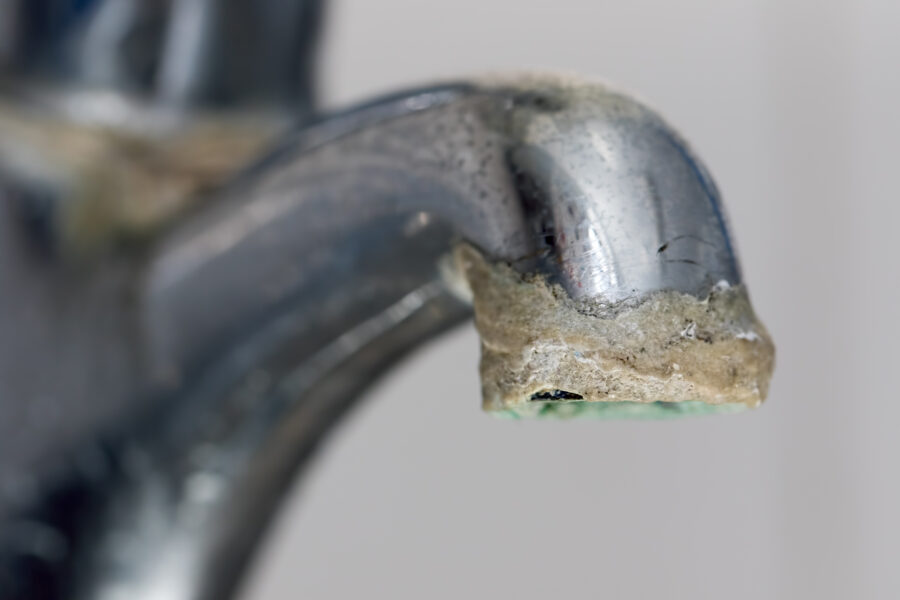
You may have heard the phrase “hard water” before. It refers to water with a high mineral content, which can lead to damage of your appliances and cookware.
Naturally, this extends to your stainless steel pans. The minerals can leave residue on your pans, which is unsafe for consumption (and generally dirty).
So, how can you clean your pans? Vinegar (as always) will get the job done. It’ll cut through the grime and get rid of any residue.
Cleaning Fingerprints and Smudges
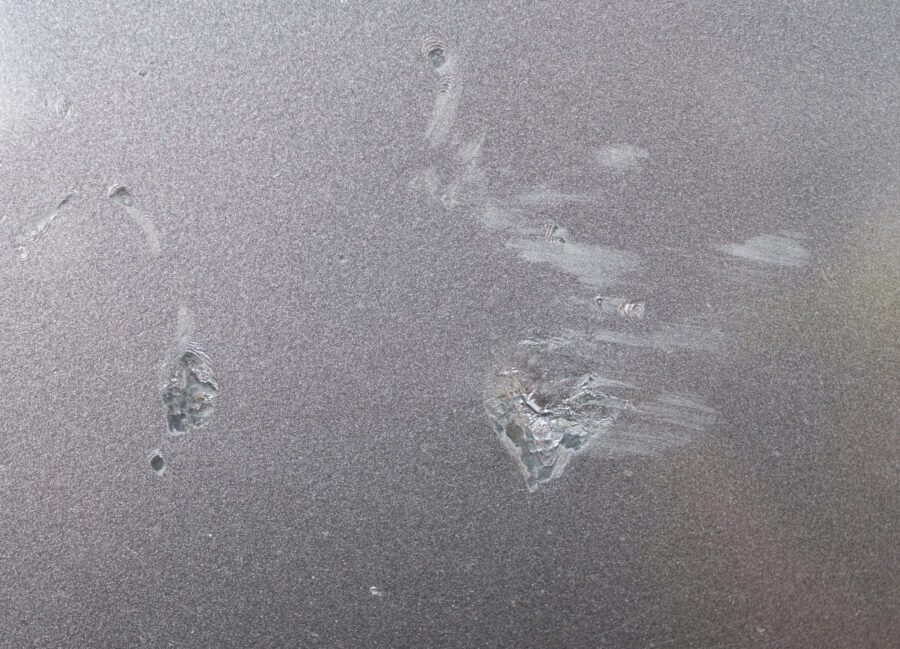
This problem can crop up when it comes to any number of stainless steel appliances. You can use these tips for your fridge, too.
Luckily, fingerprints and smudges aren’t too hard to clean. Soap and water usually does the trick, so long as you wipe along the grain.
If that doesn’t work…well, you can probably guess what we’re going to suggest next. That’s right: white vinegar. It seriously works! If it doesn’t, then stainless steel cleaner.
Does Cleaning Affect Temperature Distribution?
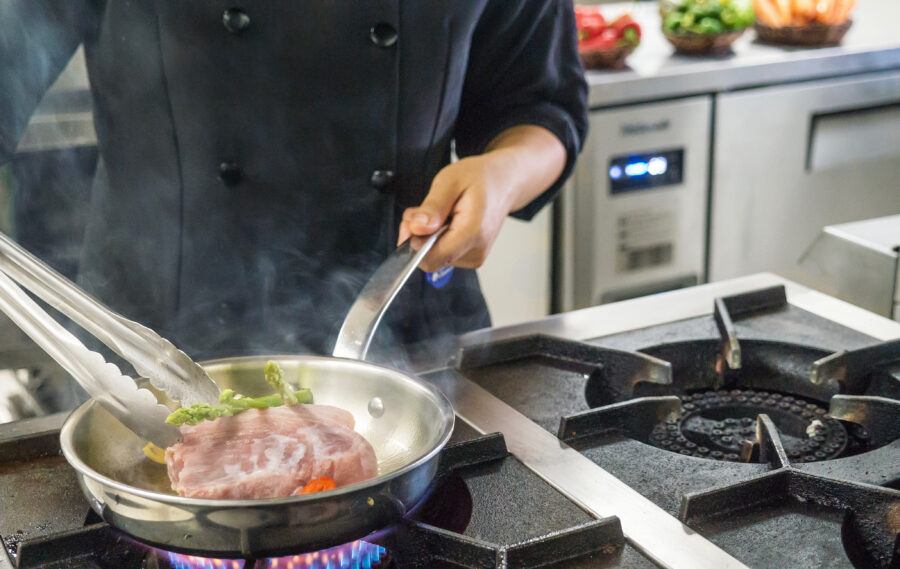
Short answer: no. Long answer: no, not really. Seriously, though, you’ve got nothing to worry about when it comes to cleaning and temperature distribution.
There isn’t really a correlation between the two. If you’ve noticed that heat isn’t distributing thoroughly when you’re cooking, you should contact the manufacturer.
This is also true for the inverse. Other than the extra cleaning you’ll have to do because of discoloration caused by heat, you’ve got to worry about.
Routine Maintenance
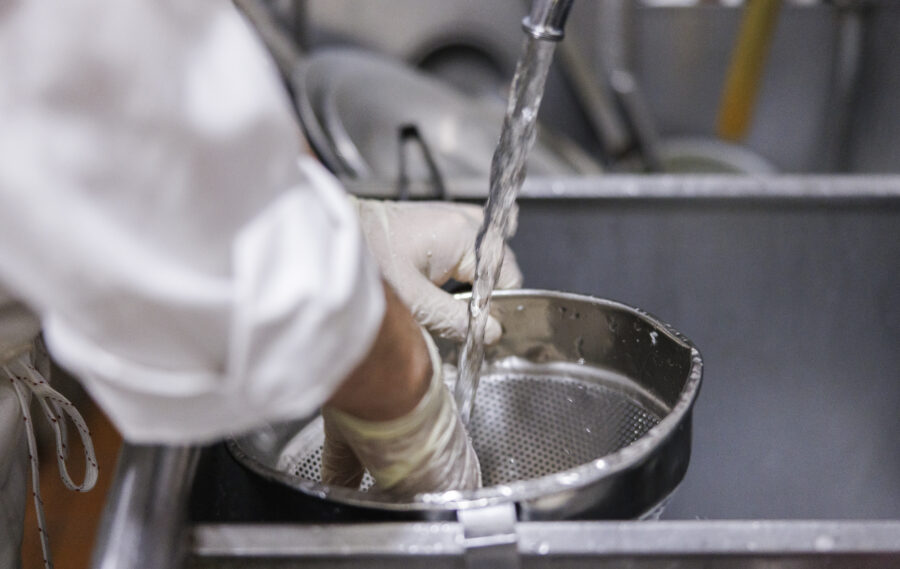
It’s important to clean your cookware regularly. You’ll ensure that you don’t get food poisoning from the bacon grease that’s been sitting in your pan for a week.
Polishing your pans isn’t as necessary as thoroughly cleaning them is. That is, unless you really want your pans to look all pretty and shiny.
Don’t forget to clean the handle and lid as well. They get dirty, too. You don’t want whatever’s on there to get in your food.
Frequently Asked Questions
What should you not cook in a stainless steel pan?
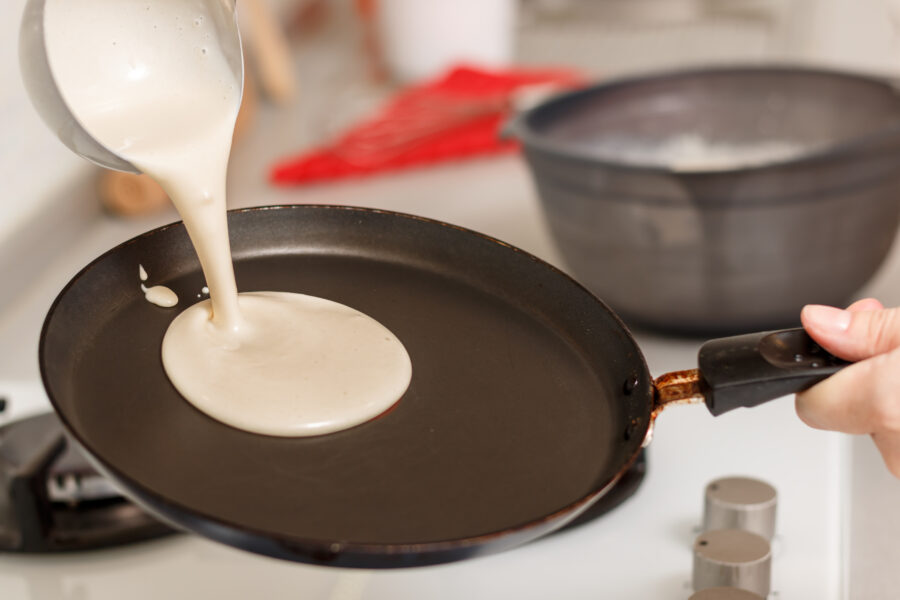
Have you ever had to peel bits of half-cooked pancake off a pan? Not fun! Since stainless steel pans don’t have nonstick coating, pancakes are a big no-no.
Eggs aren’t the best food to fry on a stainless steel surface, either. This is for pretty much the same reason as the pancakes.
You also shouldn’t use cooking sprays. Culinary expert Pamela Stafford told The Kitchn that it’ll stick to your pan long after you’re done using it.
When should you throw away stainless steel pans?
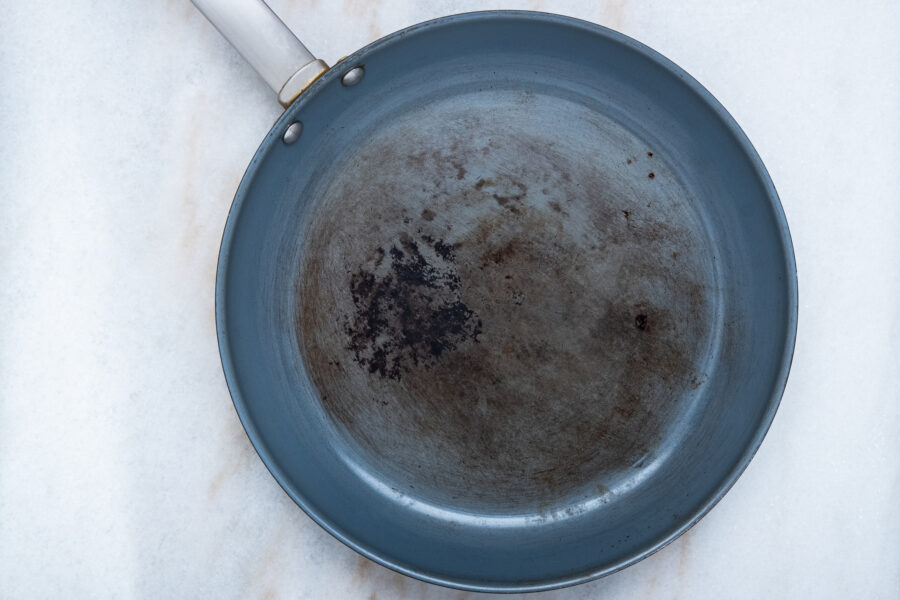
First things first: lots of issues with pans can be fixed. Just because your pan has a problem doesn’t mean that it should immediately be tossed.
However, rust is a big issue. This usually results from scratches, which damage the protective layering. Since rust is a health concern, you’ll want to replace the pan.
Scratches might be your pan’s death knell. Melissa Maker, a cleaning expert, told Global News that scratches cause the flakey coating, which can end up in your food.
How to Clean Stainless Steel Pans: Final Tips
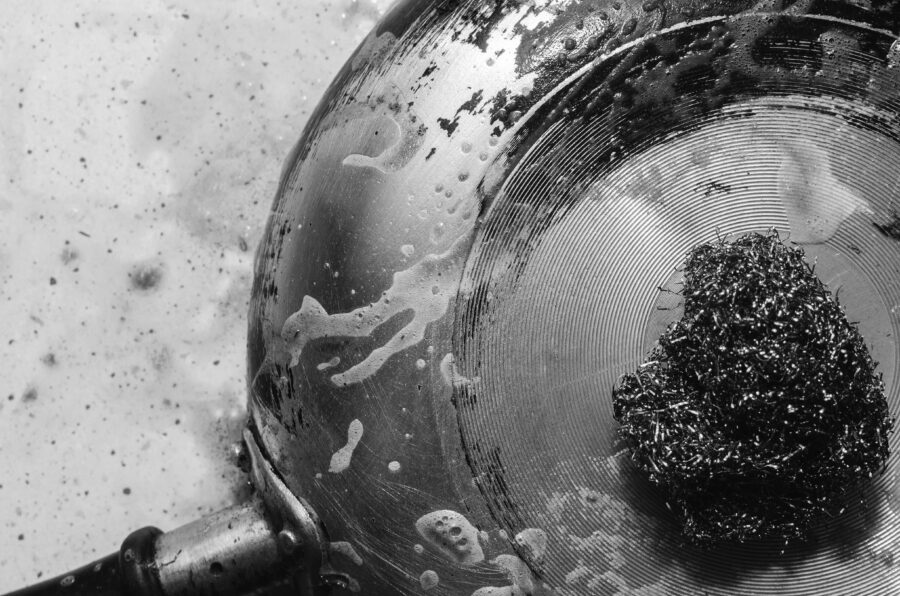
If you want to know how to clean stainless steel pans effectively, here are the things you need to remember. First, don’t use anything abrasive.
Next, wipe in the direction of the grain. Finally, store your pans properly by making sure they don’t touch. If they get scratched, it’s over.
Cleaning stainless steel pans really isn’t as hard as you might think. Seriously, all you need is some soap, water, and vinegar, because apparently, vinegar’s a miracle worker.

